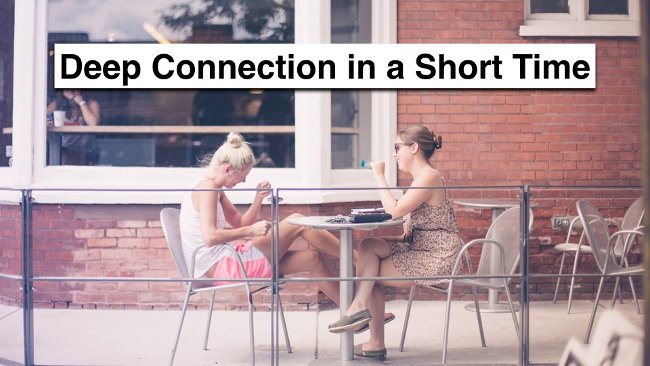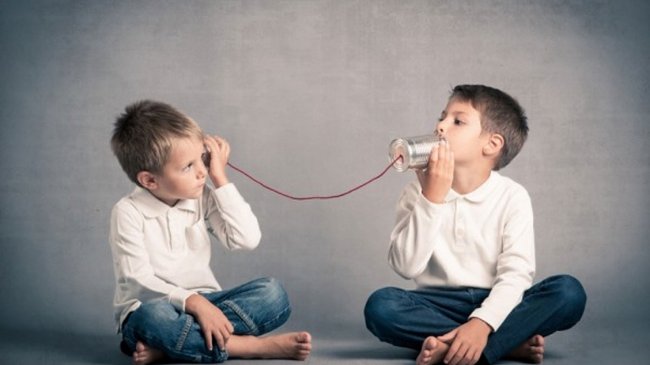How to make conversation more interesting?
- 9 sayings that smart people never use in everyday communication
- To succeed, learn the following 17 skills when you turn 20
- 24 signs that you are introverted, not shy
For most of us, making friends and building relationships is not easy. So how to help the conversation become more interesting?
The common problem that we often encounter in ordinary conversations is everyday communication like: ' Hey, how are you recently? ',' How are you going lately? 'or' Today's weather doesn't look good, hopefully the weather will be better on weekends '.
These sentences can at least help you start a conversation with someone, but often their answer will cut off the conversation immediately like: ' Healthy, thank you '; ' It's normal ' or ' The weather will be better on weekends '.
1. If you find yourself stuck in finding something to say right away, then you should learn how to improve your communication skills.

If you want to keep the pace of the conversation going on, watch that conversation as a ping-pong match .
If you ever play table tennis, you will quickly catch this art yourself. For example, when playing ping pong ( aka Ping Pong ) with someone, you will have to move forward and backward continuously during the competition. This is similar to the way a conversation is opened and maintained. A group will introduce ideas or ask questions - and the other group will give comments and answers.
The art of self-disclosure also follows the same pattern. For example, when going to lunch with a colleague, the two of them were drunk talking about food - and you suddenly realized that you were out of words to say. In this case, you can switch to self-disclosure mode with the opening sentences such as: " You may not believe it but I have been here for 10 years. In fact, this is also public. the longest thing I've ever done . "
By revealing some interesting facts about yourself, it's likely that your new colleague will also share something about them. They may respond: " 10 years, it's been a long time. The longest work I've ever done is only 6 years. Even so, but my wife has worked with me for 12 years, this time is longer than the time we get married! "
2. Don't Smash (a perfect technique in the table) when the game starts. First, start the game with gentle warm-up steps.

Going back to the table tennis metaphor above, think about the time you had to face a new opponent. If it's not an official tournament, take a few minutes to do the basic warm-up exercise with your opponent. This allows them to find out how the other player is, what their level is .
It is the same for self-disclosure in conversation. A small talk can lead to a deeper problem and gradually each member of the group will begin to share more about their dreams, fears and beliefs for others. Psychologists have noted this natural event as " an understanding of society ".
Of course, a conversation must always be balanced between being open and closed. For example, you may not want to disclose too detailed information about yourself to a new friend, but can be comfortable sharing with a long-time friend.
See also: Don't ever say "I don't know", try the following 4 ways to prove you're a good communicator
3. You will know if the person is a suitable partner after only a few "matches".

After the warm-up, a game of table tennis will take place at a more serious level . At this point, you and your opponent will show you spin skills, smash and even flicks. In other words, you will become more intimate and cohesive than the start-up phase. You will also know whether you really match your partner.
Communication skills are exactly the same as those described above. When you have reached a certain level in your conversation through self-disclosure, all will quickly become clear when you can become friends. Instinctively, you will decide this based on the person's beliefs, values and relationships with you. This is known as social comparison theory .
4. Practice according to your ability

Self-disclosure is not a simple thing . Sometimes you need to take a little courage to get out of your comfort zone. Even so, the results are still commensurate with the effort you spend. You will build friendships faster and easier. In addition, you will also know when friendship should go further and longer.
To help you remember and follow the main ideas, see the list listed below:
- Self-disclosure in a conversation must be supported from both sides
- Express self-disclosure at an increased level when you get acquainted with someone
- Decide to talk " together " by listening to beliefs, interests and values that others reveal to you
- Be willing to adapt to the conversation and self-define the level of disclosure depending on the person you are talking to
After all, self-disclosure becomes more natural when you have a deep friendship or relationship with someone. We will want to tell them about our desires and dreams - on the contrary, we want to hear similar things from them. So the next time you don't know what to say to a new friend, let yourself reveal yourself.
See also: 7 simple tips to help you make a good impression right from the first meeting
Having fun!
You should read it
- How to start a conversation when you don't know what to say?
- 7 body language helps you to sympathize with the opposite
- Harvard psychologist: 2 criteria people use to evaluate you in the first meeting
- 9 simple ways to chat with anyone
- 12 bad habits in dealing with many people
- 37 certain simple etiquette you must know
- If you don't do the following 12 things, you will definitely feel regretful all your life!
- Train these 10 habits, you will become more attractive in the eyes of others
May be interested
- How to format text in WhatsApp chats
 you can change the text style without leaving whatsapp, or you can even make more changes to fonts and text styles, using third-party websites or apps.
you can change the text style without leaving whatsapp, or you can even make more changes to fonts and text styles, using third-party websites or apps. - How to back up Whatsapp conversations in iOS
 regardless of which messaging platform you use, messages and conversations are of great importance. here, the article will mention how to backup whatsapp chats on ios device to apple's icloud service.
regardless of which messaging platform you use, messages and conversations are of great importance. here, the article will mention how to backup whatsapp chats on ios device to apple's icloud service. - Simple ways to make your boyfriend happy through text messages
 maintaining an interesting flirty text conversation can be an art. this article will give you the simplest tips to keep your boyfriend looking forward to your text messages.
maintaining an interesting flirty text conversation can be an art. this article will give you the simplest tips to keep your boyfriend looking forward to your text messages. - Group video call on Messenger, video call on Facebook Messenger
 how to make a group video call on messenger helps participants in the conversation see each other, creating a more interesting call. to know how to make a group video call on facebook messenger, readers can follow the instructions in the article below.
how to make a group video call on messenger helps participants in the conversation see each other, creating a more interesting call. to know how to make a group video call on facebook messenger, readers can follow the instructions in the article below. - Interesting facts that can change the way you see the world
 these little-known fun facts are sure to change the way you see the world. from historical trivia to far-flung wonders, they're perfect for sparking curiosity and enriching conversation.
these little-known fun facts are sure to change the way you see the world. from historical trivia to far-flung wonders, they're perfect for sparking curiosity and enriching conversation. - Invite to download 10 Halloween sticker packages for iMessage, being free
 here are 10 halloween theme emoticons for the iphone default messaging app that will make your conversation more interesting during the upcoming october 30 halloween carnival.
here are 10 halloween theme emoticons for the iphone default messaging app that will make your conversation more interesting during the upcoming october 30 halloween carnival. - 9 simple ways to chat with anyone
 with these 9 secrets, talking to your boss, new colleagues, strangers or foreigners is no longer as difficult as before.
with these 9 secrets, talking to your boss, new colleagues, strangers or foreigners is no longer as difficult as before. - 29 interesting facts about the human body that will make you exclaim 'how amazing'
 check out these 29 interesting facts about the human body that will make you exclaim how amazing they are below, we guarantee you will be extremely surprised!
check out these 29 interesting facts about the human body that will make you exclaim how amazing they are below, we guarantee you will be extremely surprised! - How to set up automatic deleting old messages on iOS 11
 auto delete old conversation is a new feature on ios 11, capable of automatically deleting messages and attachments that have been sent or received for more than 1 year.
auto delete old conversation is a new feature on ios 11, capable of automatically deleting messages and attachments that have been sent or received for more than 1 year. - Interesting knowledge that you never expected
 interesting knowledge every day will tell you more special things about life. below are interesting knowledge that many people still do not know.
interesting knowledge every day will tell you more special things about life. below are interesting knowledge that many people still do not know.










 21 the biggest regret of each person when looking back on life
21 the biggest regret of each person when looking back on life 5 dangerous habits of 'killing' the dream of life that you should quit immediately
5 dangerous habits of 'killing' the dream of life that you should quit immediately 10 things that only PAINING can teach you
10 things that only PAINING can teach you 8 simple ways to practice concentration
8 simple ways to practice concentration Writing on paper is a way to help people become smarter
Writing on paper is a way to help people become smarter 30 things every woman SHOULD HAVE AND SHOULD KNOW when they turn 30
30 things every woman SHOULD HAVE AND SHOULD KNOW when they turn 30